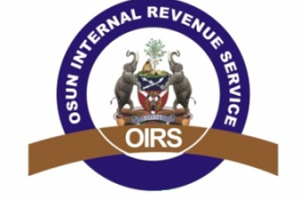ISAAC OLUSESI writes, LUC, Land Use Charge is a single most salient source of internally raised revenue that will evolve considerable equity in income distribution and solve the problem of expanding urban service system in the State of Osun.
“From the Land Use Charge Collection Fund, consisting of all land use charge payments deposited in designated banks, the share to be paid to each local government council shall be such percentage of the net land use charge on deposit, being 80 per cent of the gross collection at the end of each month as agreed between the state and local government areas. The state portion shall be remitted to the General Revenue Accounts of the state,” a law, establishing the State of Osun Land Use Charge (LUC) states.
LUC is one of Governor Rauf Aregbesola’s numerous inventions in Osun, with considerably enchanting emphasis on greater mobilisation of internal financing sources to eliminate adverse effects of his development finance policy by constantly making efforts to increase the states IGR, internally generated revenue. His LUC aims at cutting down recurrent expenditure, to match the growth of current expenditure with the growth of revenues for the development of the state, having fully convinced self that governance at all levels globally, is hindered or slowed down by acute shortages of financial sources.
Aregbesola is constantly convinced that Osun could no longer afford the luxury of perpetual dependence on the central government inadequate finances which either have dangerous implications for the state political economy even in the face of shared party identity with the centre; or had in the past, directly contributed to incoherence and retardation of the economies of the federating states in Nigeria, especially in the erstwhile Peoples Democratic Party (PDP) government at the centre.
There was thus that exigency for a revolutionary overhaul of the tax lists in Osun which Aregbesola actually did, heightened by factors of equity, revenue loss and tax administration efficiency requisite, to upsurge tax revenue from both the existing and additional sources. One of such latest sources to be intensively explored in his dive to mobilise more revenues is LUC, a consolidation of all Property and Land-based rates and charges payable under the Land Rates law, the Neighbourhood Improvement Charge law and Tenement Rates law. LUC will evolve an equitable distribution of incomes and accelerate considerable equity between tax payers in the different income groups and same income groups.
Regrettably, however, the tax structure in the PDP days in Osun was not only abysmally regressive if tax payments were related to the benefits received from the government expenditures. Those who plundered Osun vaults in the PDP days in government were invariably the people in high income position who transferred tax revenues from the low income group to themselves, with obvious regressive consequences. Horizontal equity was also violated in the sense that fraudulent officials transferred income to themselves from honest tax payers in the same income group as themselves.
In summation, instead of using the tax expenditure mechanism to redress income inequities, the PDP government in Osun actually deployed its own paradigm that accentuated them. The PDP government in its widest imagination, never consolidated revenues from sources for assessment purposes. The state was considerably under taxed most effectively in terms. Worst still, the degree of tax evasion was so high, and mal-administration so pronounced that the taxable escaped tax net, that brought the average effective tax rate in the state to its nadir.
Why LUC in Osun? Land use charge is practically most useful to tool-up equity among tax payers, directly attuned to the re-distributional objectives and persuasive resource allocation effects of Aregbesola’s All Progressives Congress (APC) government in Osun. LUC is a single most salient source of internally raised revenue that will help solve the problem of expanding urban service system at low cost, judging by the forces of rural-urban migration with accelerated effect on the growth of properties/buildings in the urban centers.
In Osun, the LUC demand notice has gone ‘viral,’ it is everywhere, here and there. The assessed value of the property in the designated areas of the state is subject to land use mill rate, determined by the annual amount of LUC and the assessed value of the property – its classification, land parcel in square meters, land value rate, building quality, building value rate in the neighbourhood; and property code rate, with a view to reinforcing both growth and equity in Osun.
LUC is administratively simple. The authorized assessors are to enter, inspect, survey and assess the property; and issue LUC demand notice and deliver it to the owner/occupier of the property for payment to be made within 90days in any of the designated banks specified in the demand notice. The LUC payment slip carries annual demand notice number, identity number, revenue code, local government code, and the amount payable or paid. What’s ultimately required is that the payer drops the bank copy of the LUC payment slip at the bank, and the other copy deposited at the LUC corporate office, or in the state Ministry of Finance, Osogbo, state capital.
Interestingly, there is discount if the property owner/occupier pays within 40days of receiving the demand notice, and a corresponding 10 per cent increase in the amount payable when the property owner/occupier fails to pay the LUC demand notice within the specified period. It is more interesting that, by fiscal analysis, LUC in Osun is a source of financing public services in the state. It is one basic exchange, with the payment of the land use charge by property owner being traded for public goods and services for accelerated development of the state.
The LUC in Osun is progressive; and on the right track, exempting substantial properties/ buildings used exclusively as Oba’s palace, public library, public cemetery, public worship, public recreation, non-profit making educational institutes, non-governmental organization work; and any other property being used for benevolent purposes owned by the state, local and federal governments, or any property specifically exempted by the state governor by notice published in the state government official gazette. But the exemption ceases when the use of the property or its use by the owner /occupier changes to one that does not qualify for exemption.
There is a warning. If the payment is not made on non-exempted, but assessed property after 365days, then the property becomes liable to receivership by the state government, and such property under receivership will be advertised in national newspapers. But the owner is entitled at any time to apply for a release of the property upon payment of the outstanding taxes, penalties and administrative charges. However, property owner could go to the LUC Assessment Appeal Tribunal, convinced of excessive assessment of his property. The tribunal, with powers akin a Magistrate Court’s could subpoena the appellant’s witnesses to appear before it, and also has power to confirm, reduce, increase or annual the assessed value and rule that payment should be made into the state government Assessment Appeal Account.
Meanwhile, the property owner/occupier who mutilates, damages or destroys the LUC identification placed on assessed property/building, or incites another property owner to misrepresent his chargeable capacity, commits an offence, attracting a maximum fine of #100,000 only or a term of 3months imprisonment, or both. Payments of all such monies including actual LUC demand notice, outstanding taxes, penalties and administrative charges are made on Electronic Banking System of Revenue Cycle Management (EBSRCM) platform, and automated receipt and bank teller obtained.
Good enough. The government of Aregbesola is a government of bio-metrics in all matters and in all circumstances. The government is not inhibited by inadequate availability of data and documented information on the extant buildings in the state. In fact, cadastral maps of properties/buildings in Osun are available on finger-tips, considered requisite for LUC identification and assessment. Neither is Aregbesola stifled by inadequate manpower situation germane to the operational efficacy of LUC. Rather, he’s brimful of emulsifiers for the evaluation of the effectiveness of LUC with no encumbrances to Osun economy.
The expedient LUC could be expanded to inaugurate site value taxation, vacant land taxation and property transfer taxation on land development to induce land use effect, and importantly as revenue raising measure. Such expanded LUC will publicly recover land value increase or land betterment value and influence better planning of land development in the Osun.
The LUC is a must tax to pay.
- OLUSESI is Assistant Director, Directorate of Publicity, Research & Strategy, All Progressives Congress (APC) State of Osun.









